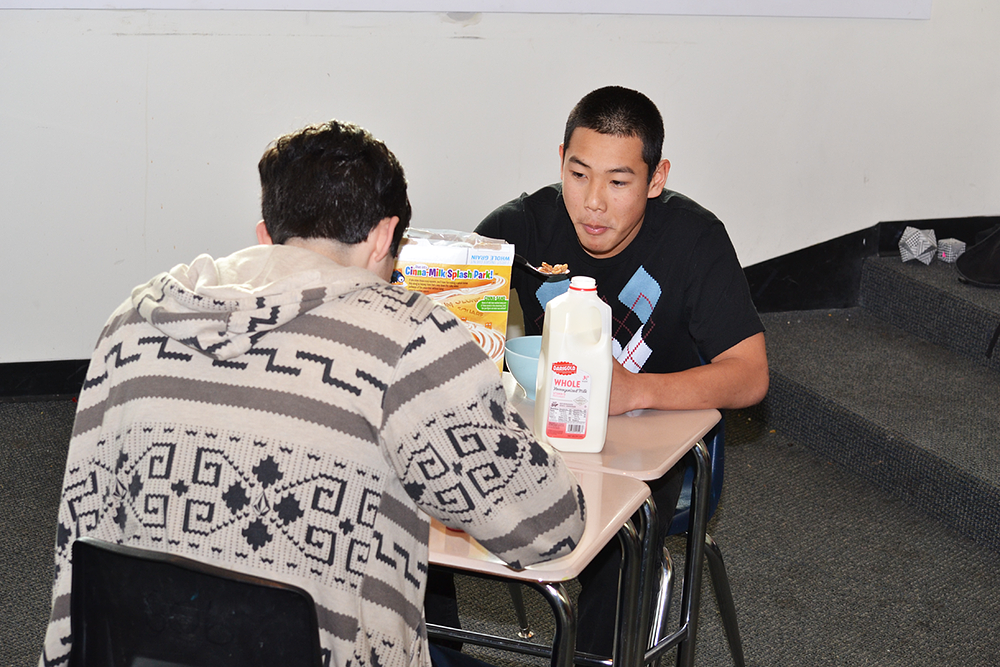The piece “Cereal” by Brother Murphy and Henry McMurray is best analyzed through the lens of Marxism: its conceptual elements of equality and ultimate triumph over the status quo question how inequality functions in the corporeal world. We observe Murphy and McMurray consuming Cinnamon Toast Crunch, the box visible. They silently eat this recognizable brand of cereal after pouring similarly brand-name milk into their white bowls. Thus, the analysis of the capitalist economy is revealed; Murphy and McMurray demonstrate the solidarity in consumerism. Mindlessly, we purchase and consume entertainment and goods — the silent brotherhood, automatic drones. In tandem, “Cereal” challenges our perception of visual art: the presence of the cereal box alongside its milk companion highlights the futility of aestheticism in the face of modernity.

The solidarity within consumerism, a Marxist concept demonstrated physically / Photographer: Chris Waage
Yet, while simple, “Cereal” is complex. The juxtaposition of solidarity in mutual consumption with Murphy’s final triumphant rising onto his own chair establishes the presence of the piece’s overarching theme: inequality. Although Murphy and McMurray share solidarity in consumerism, they are unequal on many levels. McMurray is unable to free himself from his seated position, Murphy is. Murphy wears an off-white shirt; McMurray wears a black shirt: perhaps unintentional, it highlights further the inclusion of inequality. Yet, although they both eat, they do not both escape. “Cereal” is an eloquent commentary on the social hierarchy. Yet, in the end, capitalism ruins us all.
The audience claps as Murphy rises, even though it is a clear symbol of the vicious nature of inequality, exposing our passivity in the face of unfair political, legal, social, and institutional systems. “Cereal” asks the basest questions: why do we stand by and allow oppression to occur? Why does the bystander stand by while appalling, abhorrent, cruel acts are committed? Perhaps we derive pleasure from watching oppression occur. As we clap, we show our inner fears.
As Karl Marx eloquently notes, “Political power, properly so called, is merely the organized power of one class for oppressing another. If the proletariat during its contest with the bourgeoisie is compelled, by the force of circumstances, to organize itself as a class, if, by means of a revolution, it makes itself the ruling class, and, as such, sweeps away by force the old conditions of production, then it will, along with these conditions, have swept away the conditions for the existence of class antagonisms and of classes generally, and will thereby have abolished its own supremacy as a class.”
Again, to solidarity in consumerism: why is the inclusion of Cinnamon Toast Crunch particularly significant? It demonstrates the impact of advertising in the media. We are spectators to the event of “Cereal”, just as we are spectators to the media. We consume and are readily influenced by its messages. Advertising adds another element to the media machine: it further influences media’s consumers, it conditions its witnesses. We leave “Cereal” with the Crunch in mind — just as advertising leaves its mark. Had the Cinnamon Toast been placed in an unmarked box, the piece would not be as impactful; its self-inclusion into the world of media allows it to comment more readily on solidarity within consumerism.

